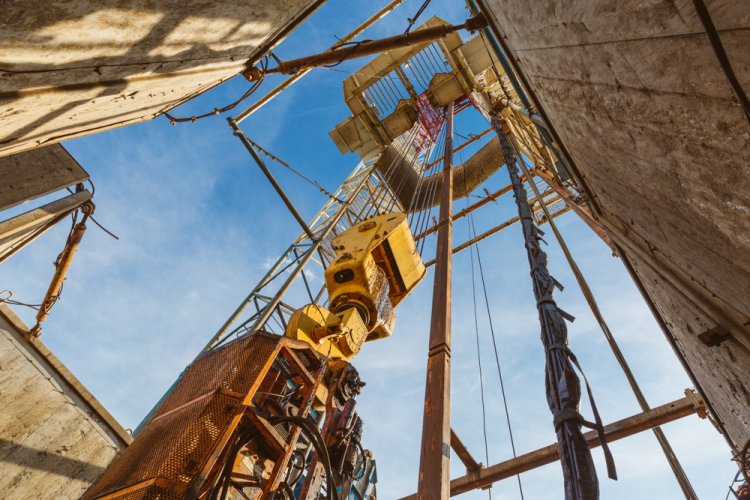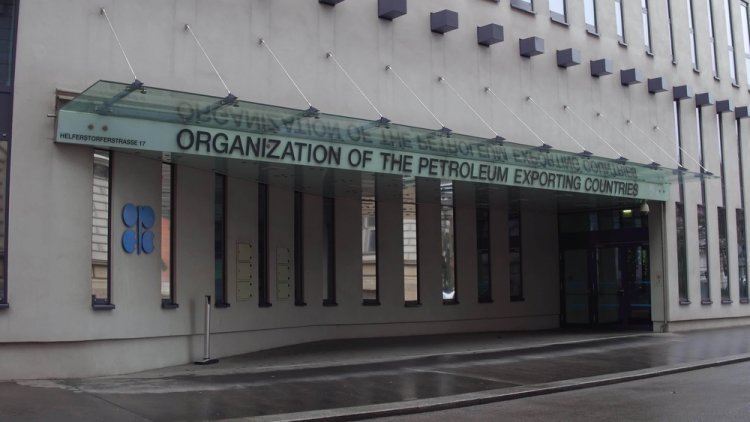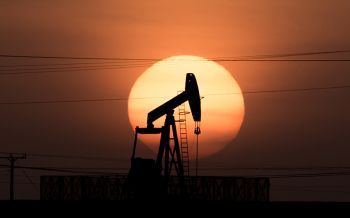- Shale production not expected to drop significantly before the autumn
- Emergency credit may be forthcoming for smaller players, but government support politically charged
- Weakened IOCs may take an opportunistic approach to M&A as smaller firms become distressed
- A deal between the US and OPEC+ unlikely and fraught with complications, but not impossible
As the true impact of the Covid-19 demand shock becomes apparent – the IEA suggests a reduction in oil demand in Q2’2020 of 20 MMbbl/d as the lockdown in multiple countries continues - and as Brent fluctuates around USD 30/bbl, oil and gas businesses are scrambling to respond.
From the energy majors to smaller pure-play shale players, all have announced major capex spending cuts in the range of 20-35% for 2020 while many have also begun to cut the number of active rigs to counter unsustainable crude prices. Rig counts in the US fell by 40 to 624 in the last week of March, the steepest reduction since April 2015.
The question now is when shale production – both in terms of oil and associated gas, and gas from pure-play gas fields - will fall in the light of the price plunge.
The US Energy Information Administration (EIA) suggests that today’s crude prices will not bring about a reduction in oil production for six months, a position that many experts agree with.
“I don’t expect to see production falling much in April,” chief commodities analyst at Swedish bank SEB, Bjarne Schieldrop tells Gas Matters. “However, the shale ‘cool down’ has already been underway over the last 12 to 14 months, and with deep capex cuts announced by US shale players over the last month, we will likely start to see a sharp drop in well completions already in May and over the remainder of the year.”
“By the end of the year we expect US shale oil production to fall by 1-2 million barrels per day versus the current production level,” he adds.
Others suggest that oil production will start to fall in the summer, perhaps as early as July.
“I’d expect oil production drops already this summer,” one trader tells Gas Matters. “With new rig and completion orders suspended immediately and capex revisions reducing new completions outlook there will be insufficient new wells to offset quick oil declines.”
“Looking at how the rig activity relates to price and production, I agree with the EIA. During the oil price crash in 2015/16 production started dropping 6/7 months after the price crash,” another market expert says. “One difference this time is that the rig count has been falling since the end of 2018, so we may see a drop in production starting sooner, perhaps as quickly as July.”
“One effect I expect to see is the new oil production per well to increase as companies focus only on their best prospects,” the source adds. “This will not be enough to offset decline from legacy wells, but the time it takes for the legacy well decline to overwhelm production from new wells will determine how steep the decline in US oil production.”
However, Michael dei-Michei, head of research at JBC Energy said unconventional production could start to fall as early as April.
“We see shale production falling already in Q2, given the dire price environment probably even already as of April,” he says. “This is different to our historical assessment that price changes take roughly three months to translate into lower completion rates and as such production changes.”
“The more immediate impact now is expected due to the drastic extent of the price fall which may very well require active production shut/ins and not just lower investment, less drilling and less well completions,” he adds.
If shale oil production tails off as early as April, gas production could also fall faster than previously forecast, as much of the expected decline is set to come from reductions in associated gas production.
In its short-term outlook released on 11 March, the EIA forecast gas production to “generally decline” in 2020 falling from an estimated 96.5 Bcf/d in February to 92.3 Bcf/d in December. The decrease is mainly attributable to the Appalachian and Permian shale basins, with low gas prices will discourage drilling in the Appalachian and sluggish crude prices to hit the Permian’s associated gas production, the EIA says. Appalachian production accounted for 37% of total shale gas production in March (85 Bcf), with Permian production accounting for 20%, according to EIA data.
Hedging shortfalls
Many firms have hedging strategies in place, however these are largely insufficient to weather the crude price plunge in 2020, meaning more production is likely to have to come offline in order for shale players to balance their books.
“Approximately 50% of US shale production for this year is hedged, however any new wells brought online will not be hedged,” says Schieldrop. “Looking at Bloomberg data, around 40% of US shale plays or wells are profitable at USD 30-40/barrel, with 40% at USD 40-50/barrel. The remaining 20% needs an oil price of USD 50-75/barrel.”
“For new wells now the shale oil producers will have to implement new hedges at the current forward WTI crude oil prices,” adds Schieldrop. “Forward WTI prices now are only in the range of $30-35/bl and not enough to make much of a profit. With this in mind, we are likely to see declines in new well completions of about 50% versus last year’s average well completion rate starting from May/June.”
However, Trisha Curtis, co-founder and President of energy analytics firm Petronerds, suggests other factors are better indicators of the ability of shale firms to contend with the price downturn.
“There is no perfect average,” she says. “Some folks are hedged at USD 30/barrel and others at USD 60/barrel. We tend to focus less on breakevens and more on well productivity, free cash flow, and CAPEX.”
Railroad ruling?
The climate is bleak for debt-laden shale firms, with reports suggesting several have called on oil and gas regulator Texas Railroad Commission (RRC) to enforce production cuts in the state – home to the country’s largest production shale oil play, the Permian basin – in a bid to prop up prices.
Separately, Texas RRC Commissioner Ryan Sitton has been invited to attend the next OPEC meeting in Vienna in June, however it is unclear how the US or the state of Texas could officially enter any accord with OPEC, as this could breach US anti-trust laws.
“The idea of the Texas RRC imposing production cuts is a far-fetched idea,” says Schieldrop. “As for OPEC, its key strategy has never been about cutting production. That is much more about tactics. Its key strategy has instead been more about holding back investments over time in its own low-cost oil [production] thus making sure that the marginal barrel supplied to the global oil market needs to come from non-OPEC oil producers with much higher production costs.”
“Any sensible relationship between the US shale oil sector and OPEC should also involve US shale firms restraining investment over time,” he adds. “It is difficult to envision such a deal.”
However, the idea of RRC-imposed cuts and Saudi Arabia and Russia reaching a deal is not impossible, according to Petronerds’ Curtis.
“Anything is on the table,” she says. “Three weeks ago, no one had an idea of the levels of demand destruction that we are seeing.”
“There is an incentive for all – Saudi Arabia, Russia and the US – to reach an agreement to cut crude production as the current price and demand outlook is weighing on everyone,” she adds. “OPEC and US shale producers previously held talks behind closed doors during the pricing downturn in 2014. April may well be the come to Jesus moment where oil producers and see the full weight of demand destruction and come to the table.”
Dei-Michei echoed Curtis’ sentiment that a deal is needed, however he believes it unlikely to happen.
“[T]he market may very well be in a situation where it needs a tangible solution within the next 6 – 8 weeks, at least half of which falls into a window where the Saudis and others have already sold a lot of cargoes that now will have to be loaded and shipped,” he notes.
“As such we deem it technically, politically and time-wise pretty unlikely that a properly sized solution [to the] problem can be created,” he continues. “All signs point towards price and demand having to deal with this by shutting in production wherever it may be necessary.”
Credit lifeline
With the world’s largest oil producers poised to flood the market with crude starting in April and the apparent unlikelihood of OPEC agreeing to a production cut any time soon, the situation looks dire for distressed shale players – many of which have loan repayments due in the short-term. The pricing and demand outlook raises questions over the ability of debt-laden shale firms to access credit lines.
“Given the importance of the energy sector to the US economy, it is not impossible to think that these firms will access emergency credit,” says Schieldrop.
Government support may also be on the cards, according to dei-Michei: “We cannot rule out the possibility of government aid for shale players, but so far oil companies are not set to benefit directly from the most recent stimulus package,” he says.
Director at Lux Research Arij van Berkel tells Gas Matters said the idea of federal loans “is not a bad policy” as it would protect assets and “thus ensure energy independence. However, he stresses government funds could be better placed in renewable energy projects, raising further questions about the extent to which governments should support fossil fuels, even in a crisis.
But, with the long-term ramifications of the 2008 financial crash still fresh in the minds of policymakers, the fossil fuel industry could be too big to fail.
“This is unprecedented and anything is on the table at this point,” says Curtis. “With the scale of distress across the global market, oil is just another problem to be dealt with and could have significant ramifications for many countries if it is allowed to go under.”
M&A spree?
Previous price downturns have seen the opportunists swoop to mop up assets from distressed firms, however the conditions for such deals are uncertain in the current climate.
“The weakness of the major players such as ExxonMobil is a negative sign for potential M&A activity,” says Schieldrop.
“ExxonMobil is usually counter-cyclical and has been one of the few firms investing in longer-term horizons during downturns. Recent announced capex cuts by the majors is a reflection of the current dire situation.”
“However, current very low-price levels in combination with very high debt loads among many of the shale oil players will force either bankruptcies or consolidation,” he adds. “We’ll likely see significant consolidation in the sector in the coming couple of years.”
Calming investor concerns will be the primary aim for players all of sizes, according to dei-Michei, with M&A activity unlikely in the short-term.
“We expect M&A appetite to remain subdued for the next few weeks and months, and ultimately at the very least until market prospects become more clear thereby allowing buyers to more accurately price the assets they might intend to buy,” says dei-Michei.
With bankruptcies in the shale sector expected, many vultures may wait for foreclosures before embarking on an M&A spree, according to van Berkel.
“It is too early for M&A activity for a number of reasons,” says van Berkel. “Just very opportunistically, why not wait for foreclosures to happen? As long as nobody is buying, you can just wait for more desperate times as a buyer.”
“More importantly however, I think that companies will need to evaluate their portfolios and think hard if they want to double down on shale longer term,” he adds. “There is the expectation that oil demand will peak (structurally) around 2035. If or when that happens the wells with high break-even prices will go down first. Oil companies are working hard to create portfolios with low average break-even prices. Therefore, I think that the bargain must be pretty attractive to raise an appetite for M&A.”
Long term, the question is how prolonged, how deep and what shape the storm in the US shale sector will take. In the absence of a deal, and with Saudi and Russian oil flooding the market and filling up storage facilities, there will be nowhere left for oil production – or its associated gas - to go. Conventional production, with variable marginal costs but long production timescales on completed wells, will respond differently to unconventional projects, with low marginal costs but short production timescales and high capex requirements to maintain production.
“This suggests a bloodbath until unconventional runs down,” one industry experts notes. “Then a re-balancing at a price where big conventional is still profitable in some cases with unconventional and other conventional wiped out.”
Ultimately, the long-term survival of US shale will depend not on its ability to remain standing in a crisis, but its ability to pick itself up again when the worst is over. On that point there may be cause for optimism, according to one industry expert: “[US shale] has always confounded by its resilience in the past,” he says. “I would be surprised if it cannot react quickly to evidence of a sustained return to higher prices - which might in today's terms be over USD 40/bbl.” -ET
Subscription Benefits
Our three titles – LNG Business Review, Gas Matters and Gas Matters Today – tackle the biggest questions on global developments and major industry trends through a mixture of news, profiles and analysis.
LNG Business Review
LNG Business Review seeks to discover new truths about today’s LNG industry. It strives to widen market players’ scope of reference by actively engaging with events, offering new perspectives while challenging existing ones, and never shying away from being a platform for debate.
Gas Matters
Gas Matters digs deep into the stories of today, keeping the challenges of tomorrow in its sights. Weekly features and interviews, informed by unrivalled in-house expertise, offer a fresh perspective on events as well as thoughtful, intelligent analysis that dares to challenge the status quo.
Gas Matters Today
Gas Matters Today cuts through the bluster of online news and views to offer trustworthy, informed perspectives on major events shaping the gas and LNG industries. This daily news service provides unparalleled insight by drawing on the collective knowledge of in-house reporters, specialist contributors and extensive archive to go beyond the headlines, making it essential reading for gas industry professionals.








